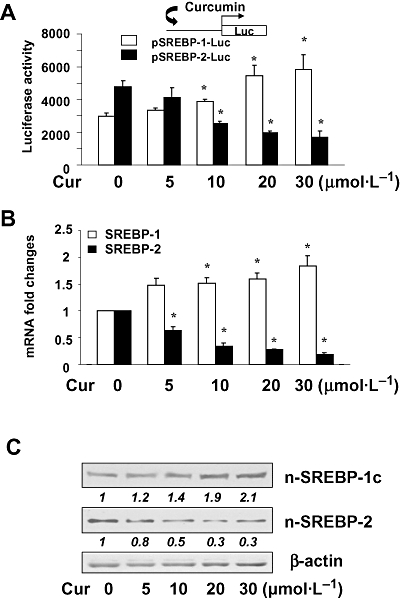Figure 7.

Curcumin differentially regulated gene expression of sterol regulatory element-binding proteins (SREBPs) in hepatic stellate cells (HSCs). Semi-confluent HSC were treated with curcumin as shown for 24 h. (A) Luciferase assays of cells transfected with the luciferase reporter plasmid pSREBP-1-Luc, or pSREBP-2-Luc, containing a fragment of the 5′-flanking promoter region of srebp-1 or srebp-2 respectively. Luciferase activities were expressed as relative units after β-galactosidase normalization [means ± standard deviation (SD); n≥ 6]. *P < 0.05 versus cells with no treatment. The inset denoted the pSREBP-1-Luc and pSREBP-2-Luc constructs in use and the application of curcumin to the system. (B) Real-time PCR analyses of the steady-state mRNA levels of SREBPs. GAPDH was used as an invariant control for calculating mRNA fold changes. Values were expressed as means ± SD (n≥ 3). *P < 0.05 versus the untreated control (the first columns on the left). (C) Western blotting analyses of the abundance of SREBPs. β-actin was used as an invariant control for equal loading. Representative results from one of three independent experiments. Italic numbers beneath the blots are fold changes in the densities of the bands compared to the control without treatment in the blot (mean; n= 3), after normalization with the internal invariable control β-actin. Because of the limited space, standard deviations were not presented.
